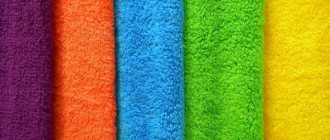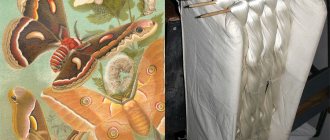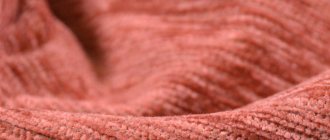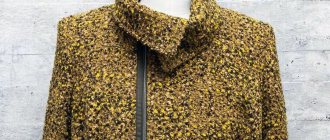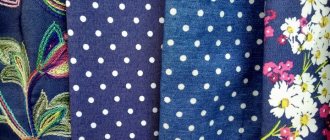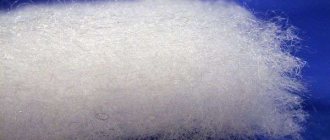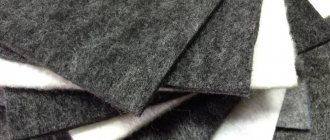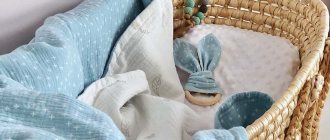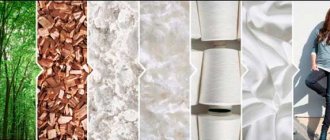What is a parka?
A parka is a warm, long jacket with a fur hood with a zipper. All elements of the product are aimed at performing heat-insulating, water-repellent and protective functions. Most often, the parka is made with a length below the hips and is distinguished by parallel ties at the waist and at the bottom of the product, the so-called drawstrings, which can be used to adjust the fit of the jacket at the waist, as well as its tightness to the body.
A mandatory element of a classic parka is a hood with a collar trimmed with natural or artificial leather.
with fur that, when buttoned, covers half the face. However, today they prefer to create either universal models with the ability to unfasten the hood, or cooler options without it at all.
The functionality of the parkas is also provided by large and convenient pockets in which you can hide your hands from the cold or some useful things.
Separately, it should be noted that the parka has a zipper lining, which makes the clothing more versatile. In the winter season - a fur lining, and in the fall or spring - a standard lining of the outer product.
History of the origin of the parka
Initially, parkas were warm, elongated jackets with a hood made of deerskin, the creators of which were the Eskimos who inhabited the northern part of America for a long time.
This invention later became the prototype for US military jackets, which were designed for operations in cold weather conditions, as well as Soviet Alaska jackets, which were very popular in the last century.
And only decades later the parka became a stylish element of secular fashion. Warmer options for very cold winters are especially popular in northern countries; for the population of warm countries of the world, manufacturers have created lighter versions of this jacket.
DIY parka materials
The most ideal material for a parka is Ventile, a tightly woven cotton fabric whose threads swell with moisture and protect against water getting inside the product. This amazing material was created for the clothing of RAF pilots who served in northern waters. The properties of the Ventile made it possible to keep a person alive in ice water for 20 minutes, which is why it is still used in the service of the British Air Force.
For secular parkas, more affordable materials are most often used, which are no worse in their characteristics than deerskin and ventil. Modern fabrics for sewing such a jacket have acquired a logical name - parka.
Today, one of the most popular materials is Canada parka, which is often classified as raincoat fabrics. The Rosetex store offers a wide range of Canada parka colors. The peculiarity of this fabric is its matte, dense surface, thanks to which it is classified as a noble and refined material. The Canada parka has a special coating and impregnation, which ensure that outerwear made from it perfectly protects from wind, cold and moisture.
Also in the Rosetex store you can buy fabric for sewing a parka - cotton parka on knitwear , characterized by a symbiosis of two fabrics: cotton and knitwear, which increase a number of advantages of this material. High-quality impregnated cotton will make the product breathable, water-repellent, warm and wear-resistant. Knitwear will enhance the thermal insulation properties of cotton, giving the product elasticity and softness.
It should be noted that a large selection of lining fabrics and furs complement
t is a complex of all the necessary materials for sewing a comfortable, warm and practical parka.
What can you wear with it?
After the parka has become part of your wardrobe, it’s time to think about what is best to wear it with. The peculiarity of the parka is that it is suitable for the most unusual outfits.
Of course, the ideal look would be a combination of a parka, skinny jeans, warm boots or unisex boots. However, you can experiment with different styles of skirts and pants. Short dresses also look great with a parka.
STORY
1. Lieutenant Stuart Namm in the winter of 1956 (after the Korean campaign). 2. Soldier in the fishtail park. 3. Photo card with congratulations from American soldiers: “Happy New Year from Korea 1952.” 4. Menacing fashions from the advertising campaign for the film Quadrophenia, based on the album of the same name by The Who. 5. American Marines in fishtail parkas, depicted on the packaging of models for assembly. 6. Standard markings of an authentic military fishtail parka. Inventory number - 73-N-66951.
Such outerwear appeared in 1951 - the American army equipped its infantry with it during the Korean War. There are two models of fishtail parkas: M-51 and M-65. The letter “M” means “military”, and the number corresponds to the year the model was introduced into uniforms. Unlike the cavalry tailcoat, the floors of which were split in two so as not to wrinkle when riding, the style of the infantry parka had a different utilitarian purpose. The war lasted for more than one year, and the infantry learned all the delights of monsoon storms. Complete with lacing at the hem, the double heel allows the jacket's thick fabric to be tied around the hips for added protection from strong winds.
Scooter mods, photo from the book "I'm One: 21st Century Mods"
Designed primarily for combat units such as the Army and Marines, the fishtail parka is designed to protect soldiers in two layers. The parka itself protects in “dry” frosts (-10 °C), and with a padded wool lining it passes the category “for ultra-low temperatures” (-51 °C). Over time, the US Army re-equipped its soldiers with clothing certified as the Extended Cold Weather Clothing System (ECWCS), and the fishtail parka was completely adopted by workers, city dwellers and fashionistas. At the end of the Korean campaign, the parkas were delivered to the allied British military stores as surplus combat uniforms, where they were noticed by mods who appreciated their functional merits: a fishtail parka was relatively inexpensive at that time, but was extremely practical and durable to use.
Properties of fabrics and coating composition
women's demi-season jacket
The fabric must have the following characteristics:
- strength, wear resistance, resistance to mechanical damage;
- dimensional stability, wrinkle resistance, no shrinkage;
- water repellency;
- protection from wind, cold, snow, rain;
- dye fastness after exposure to precipitation;
- easy care that requires no effort.
The jacket material is treated with a special impregnation. It can be water-repellent, dirt-repellent, windproof. Main types of compositions:
- PU – transparent polyurethane coating. Protects from moisture, wind, fat, sweat. Does not wash off after washing, does not peel off, resistant to organic substances. It comes in different thicknesses. With a value of 3000 or more mm of water column, the material is considered waterproof.
- Milky is a white polyurethane coating applied to the fabric from the inside. Makes the fabric tougher and retains fibers.
- Silver – silver internal impregnation. Provides protection from sunlight and moisture, prevents fluff from falling out.
- PVC is a rubberized inner coating made of polyvinyl chloride. Makes jacket fabrics completely waterproof. Resistant to fire and many chemicals. Low thermal and electrical conductivity.
- Membrane is a special impregnation applied hard to the canvas using a hot method; or a thin film glued or welded to the material. It should let moisture out on one side and not let moisture in on the other.
- Peach-skin is a fleecy coating that feels similar to the fluffy skin of a peach. Does not require special care, repels water.
- WR – water-repellent layer on the outside. The water is not absorbed, but rolls off in drops. The same thing happens with dirt.
- WS gives a compression effect.
- Cire is a layer containing fluff.
- PD makes the fabric durable. Apply from the inside out.
- Ultra Foil is a brilliant external impregnation.
It is necessary to choose the most suitable composition of impregnation and material. A casual jacket is not suitable for sports activities. A light windbreaker cannot be worn in late autumn.
WHAT ARE THE FISHTAIL PARKS SEWED FROM?
Initially, the fishtail parka was intended for infantrymen deployed in harsh weather conditions. Therefore, historically, the M-51 parka is made from the warmest components, with the development of technology supplemented by complex materials that now make life easier for the civilian population.
WOLF FUR
Wolf in natural habitat
In the classic version of fishtail parkas, the hood is trimmed with wolf fur, which belongs to the category of the warmest and most durable furs. This type of fur is highly valued among people working in extreme conditions; sleeping bags, jackets and fur coats for polar explorers and pilots are often made from it. In terms of its heat-protective properties, wolf fur is on average one and a half times more effective than beaver and muskrat fur. It is quite difficult to process it technically, but with proper design, the material retains the natural strength inherent in fur due to the harsh conditions of existence of wolves. For super-warm clothing, winter wolf skin, which is the furniest, is used. True, after the wolf was included in the list of endangered animals, hoods began to be trimmed with artificial fur.
WAXED COTTON
Thick cotton fabric before dyeing and waxing
Waxed cotton for fishtail parkas is made by impregnating cotton threads with paraffin. The textile becomes waterproof and suitable for making waterproof clothing and even for ship sails. From the mid-19th century to the mid-20th century, clothing made from waxed cotton was incredibly popular among sailors - waxing technology allows you to achieve an optimal balance of waterproofness and ventilation, in addition, clothing made from this material is less rigid, lighter and warmer. Military fishtail parkas typically used cotton mixed with nylon.
NYLON
Nylon yarn
The patent for nylon fiber belongs to the American company DuPont, which earns several billion dollars a year from this. In 1935, it was invented by the company's leading organic chemist, Wallace Carothers, who was faced with the task of creating a material similar in quality to silk. Since 1939, it began to be used in a wide variety of industries, not least in the production of clothing. Nylon fabrics retain their shape well, do not wrinkle, do not fade in the sun and have windproof properties. With proper processing, nylon becomes resistant even to X-rays and gamma rays, known for their increased penetrating ability.
MEMBRANE
Three-layer membrane fabric in prepared form
Modern premium brands use expensive and technologically advanced membrane fabric. It is made at different factories in its own way, with proprietary nuances, but the main advantage of such fabric is its increased wearing comfort: it does not allow water to pass through from the front side, and due to its design features, it releases steam from the inside, allowing the skin and body to breathe. This property of membrane fabric makes the material ideal for winter clothing.
WOOL
Italian mohair yarn
In the infantryman’s uniform report card, a warm lining for outerwear was a separate item, and it is due to this that the fishtail parka is classified in the category “for extremely low temperatures.” The insulation is made from mohair or alpaca wool.
Mohair, the wool of Angora goats, is one of the warmest natural materials. Mohair thread is twice as light as wool thread of the same length, but from a different breed of animal. Products made from mohair yarn are very warm. For the lining of the military parka, sixteen-ounce woolen fabric was used.
What other reasons is it so important to choose quality clothing?
By buying a cheap, low-quality product, in addition to harmful chemicals, you can get a lot of unpleasant “surprises.” For example, instead of high-quality disinfected raw materials, the lining may contain feathers from sick birds. And they, in turn, can cause enormous harm to health.
- Pathogenic bacteria . Once in the human body, they can provoke a lot of diseases: salmonellosis, staphylococcus and others. Pneumonia, sepsis, genitourinary tract infections and much more may develop. Bacteria have the most harmful effect on children and people with chronic diseases.
- Mold . Produces toxic spores that spread quickly. They can trigger asthma, respiratory diseases, skin rashes, stomach upsets, nosebleeds, and damage the kidneys, liver and lungs.
- Fungi .
They can cause serious diseases of the nail plate, skin and mucous membranes.
To get rid of most of these microorganisms, it is not enough to simply wash the parka thoroughly - you will have to take the item to the dry cleaner. And you can get rid of mold and mildew on fabrics made from natural materials by simply soaking the jacket in warm water with the addition of hydrogen peroxide, baking soda or laundry soap. Synthetics will have to be boiled with bleach. After this, you need to wash the parka in the washing machine with washing powder or gel.
However, you should understand that boiling, bleaching and other serious actions can ruin the item.
[Total: 2 Average: 5/5]
MANDATORY ELEMENTS OF FISHTAIL PARKS
The fishtail parka stands among other front-line trends of our century thanks to its pragmatic design. All elements of the M-51 parka, both functional and basic, may undergo minor stylistic deformation. But the following details distinguish this model from any other.
HOOD
It’s hard to imagine a real fishtail parka model M-51 without a spacious hood. But if it is not needed, it can be hidden inside a specially designed collar. As in the M-65 model, here the hood can be unfastened using buttons.
ZIPPER, BELT, POCKETS
The military fishtail parka is fastened with a reliable metal zipper. To protect against blowing, the zipper is covered with a special windproof flap along the entire length of the jacket with tight buttons.
Another important functional detail of the fishtail parka is the encircling cord at the waist; when tightened, it protected American soldiers from a cold back, and fifteen years later attracted British fashionists as an additional style touch.
The pockets on the fishtail parka are cut diagonally at the waist level, just above the drawstring waistband, and are closed with a flap fastened with a metal button.
COLOR
For field trips, camouflage is important. However, camouflage did not appear until 1981, and fishtail parkas had a smooth khaki color. Khaki is the Hindi word for the color of the earth. This word entered the English language in the 19th century, when mercenary soldiers of the British army, Indians by origin, out of a desire to protect their snow-white uniforms from desert dust, began to dye it with coffee powder and curry. Gradually, khaki became the standard color for the uniform of not only the British, but also the American army.
LINING
Military technologists design uniforms so that they take up minimal space while being as functional as possible. In the case of the Korean War, the jacket had to be suitable for all weather conditions. The single-layer parka served as a raincoat and windbreaker, and together with the wool lining it became almost as warm as a Russian sheepskin coat. In the American army report card during the Korean campaign, the lining for fishtail parkas was listed as a separate item.
FLOORS AND LACING
The fishtail tails of the jacket are slightly reminiscent of a tailcoat, and if you tie them around each leg, you can additionally protect yourself from the cold. It is usually not immediately clear why there are so many laces at the hem, and in order to somehow justify their presence, the back ends are tied. The American Marines tied the back braid in pairs with the front so as to wrap both legs in the material - this is how they felt more comfortable during the monsoon season in Korea. Today's fashionistas have no need to heavily insulate, but the functional detail remains.
Important nuances when choosing
What exactly to look for when choosing a parka model for yourself:
- no structure Oversized is still in trend. Loose fit and variety of styles continue to be at the peak of popularity. The more, the better and warmer. They look great with a huge scarf;
- You should choose a parka with enough pockets to keep everything at hand and have easy access to the necessary things. The phone will go into the inside pocket. The rollers are zippered in the chest pocket, and your house keys will never get lost in the side pocket;
- It is advisable to choose a model with artificial fur lining . They will add additional luxury, warmth and beauty to the image;
- this season you should pay attention to bold colors - pink, blue, black and gray;
- You need to pay attention to the presence of a large hood . Thanks to him, you can do without a hat. A large hood that hangs over your face will always help you stay completely dry;
Expert opinion
Helen Goldman
Male stylist-image maker
Pay special attention to choosing the right size parka. You should buy something a little larger so that you can wear a thick jumper on cold days.
WHAT TO WEAR WITH A FISHTAIL PARK
New fashion trends in the form of chinos and loafers are a typical gentleman's set of fashion from the sixties. Therefore, it is not surprising that the fishtail parka fits so well into the style of the modern urban fashionista - this competent appearance has been maintained for decades. In addition, a fishtail parka is perfect for our harsh weather - in the fall it will reliably protect the owner from rain and cold wind, and in winter, if there is a warm lining, it will help keep warm regardless of what is worn underneath - a woolen sweater or a thick flannel shirt.
The stylistic features of the fishtail parka are also beyond doubt; in this sense, it is absolutely utilitarian - it can be worn with a suit or with corduroy trousers, but a set that is as close to work aesthetics as possible is best suited - a checkered shirt, thick jeans and high-soled boots . The only thing you shouldn't do is wear cargo pants with a fishtail parka - such a combination risks turning you into an American infantryman from the Korean War, which is not a good look for peacetime.
The original fishtail parka model M-65 or M-51 can now only be found in a second-hand store, in a military equipment store, or ordered on eBay. Modern brands, of course, produce their own versions of fishtail parkas, but they still differ noticeably from the canonical models in the absence of certain details.
